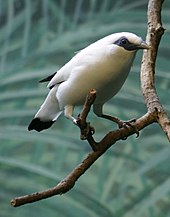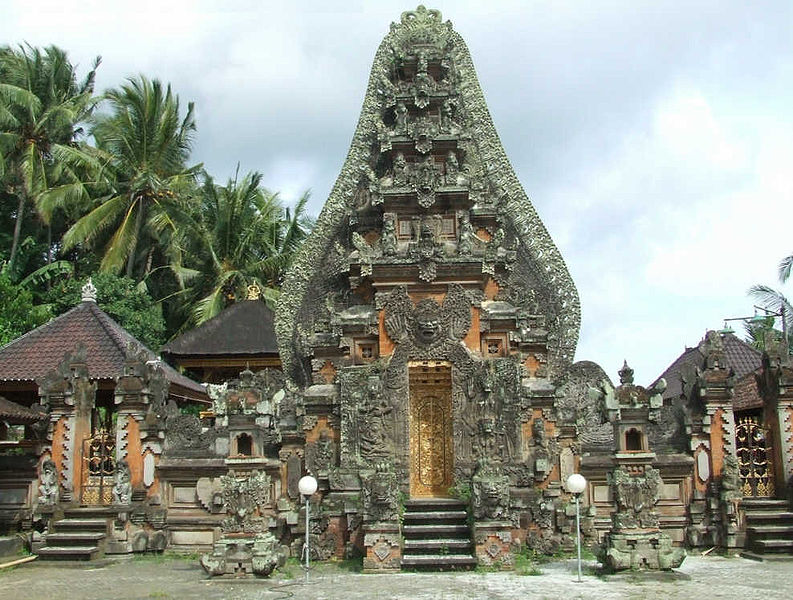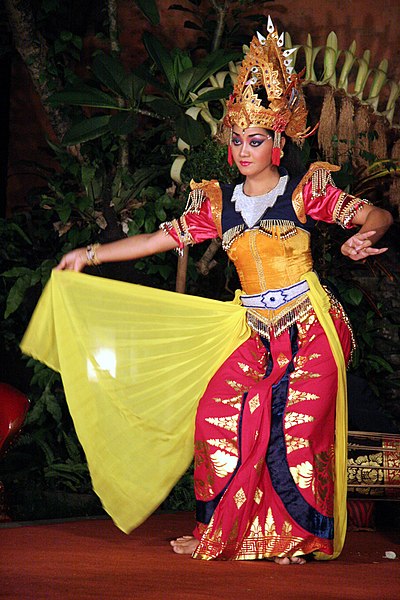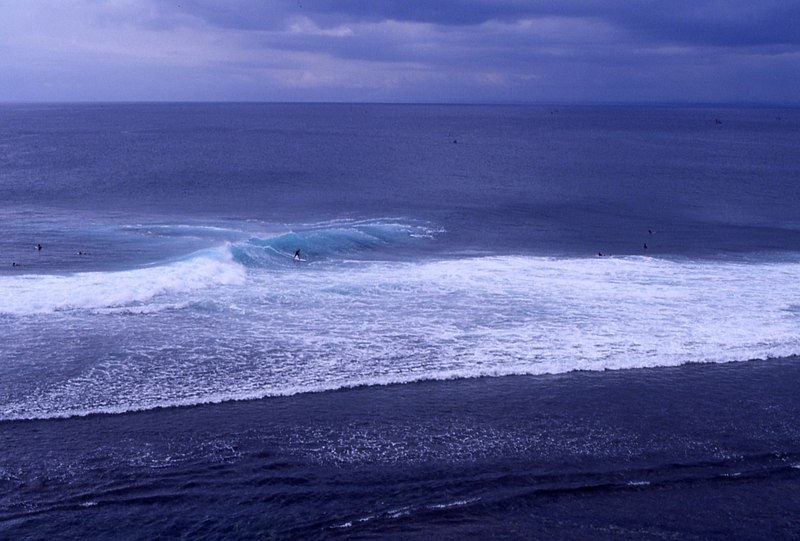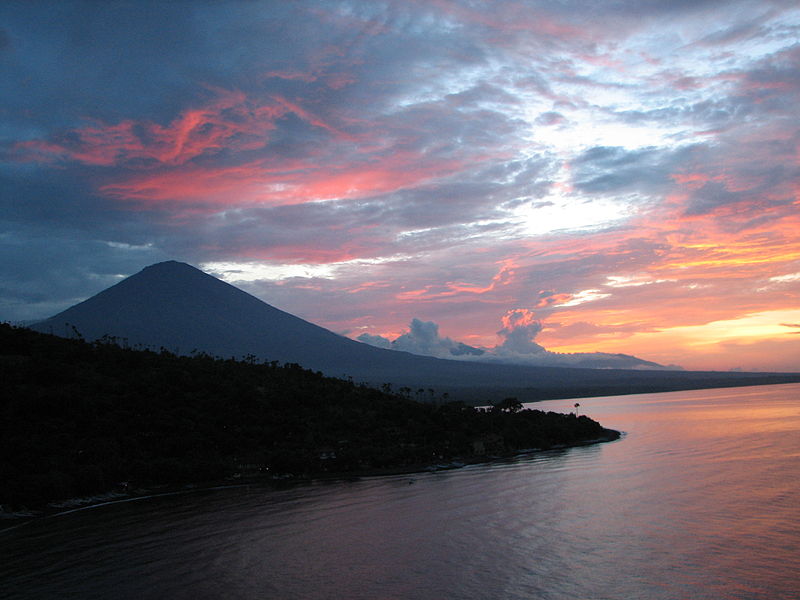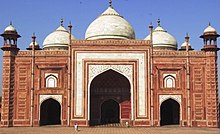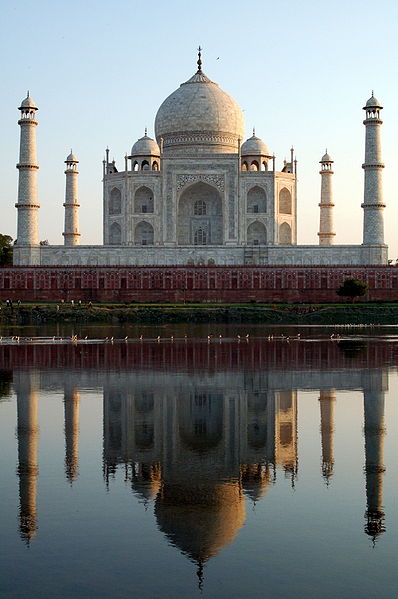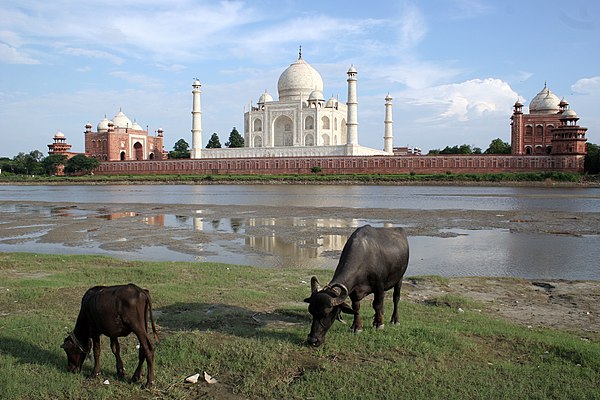 |
| The Hindu Balinese temple offering |
Bali's best-known attractions are its countless Hindu temples. Each village is required by adat (customary law) to construct and maintain at least three temples: the pura puseh (temple of origin) located at the kaja (pure) side of the village, the pura desa (village temple) at the centre for everyday community activities and the pura dalem (temple of the dead) at the kelod (unclean) end. Wealthy villages may well have more than these three obligatory temples, and additionally all family compounds have a temple of some nature. The nine directional temples (kayangan jagat) are the largest and most prominent. These are located at strategic points across Bali and are designed to protect the island and its inhabitants from dark forces. Pura Luhur Uluwatu (Uluwatu temple), at the southern tip of Bali, is easily accessed and hence very popular, as is Tanah Lot. For the Balinese, the "mother temple" of Besakih on the slopes of Mount Agung is the most important of all and sits above the nine. The other seven directional temples are Pura Ulun Danu Bratan, Pura Ulun Danu Batur, Pura Pasar Agung, Pura Lempuyang Luhur, Goa Lawah, Pura Masceti and Pura Luhur Batukaru. All of these are located on either rugged high ground or at the water's edge, and this is a clear indication of the likely source of dark forces as far as the Balinese are concerned.
Photo: Richly adorned Kori Agung gate and pavilions within Pura Dalem Agung Padantegal compounds in Bali
Balinese temple design is an involved subject and one which baffles many visitors. Local geography has a fundamental effect on design, and two temples are rarely the same. Everything you see, be it decorative or structural, has a specific, well-considered function which may be of an earthly or spiritual nature. There are, though, general elements which are common to the vast majority of temples, which are always split into three courtyards: jaba (outer courtyard) , jaba tengah (middle courtyard) and jeroan (inner courtyard). Each of these courtyards contains various structures and/or shrines of differing levels of importance.
The tiered, black-thatched roofs that you see on temples are made from a palm fibre, and this material is not permitted to be used for any roof other than those on temples. The elegant, pagoda-like tiered structure is itself called a meru (named after sacred Mount Meru (Mahameru), the home of the gods), and the most dramatic of them can consist of as many as 11 tiers. The number of tiers, though, is always an odd number.
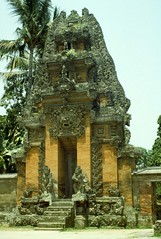 |
| Bali Temple Gate |
The temple entrance is always on the kelod axis point (facing away from Mount Agung) of the compound and is usually a gateway of some nature. This leads into the jaba which is the domain of humans and all things earthly. The jaba contains only minor shrines, is where some celebratory dance performances take place, and during special ceremonies is where the foods stalls are set up. Non-Hindu tourists are nearly always allowed to visit this part of a temple. A gateway called a candi bentar leads into the central courtyard which is called the jaba tengah. This is the intermediary point between our earthly domain and the realm of the Gods, and this is where daily offerings are prepared in an open pavilion called a paon. The jaba tengah also usually contains a large pavilion called a wantilan, which is used for special dance performances.
The kori agung gate leads into the jeroan—the inner sacred area. This houses the most important shrines to different Hindu gods and deities and is where serious rituals and prayers take place. Shrines are many and varied but usually include a padmasana, the throne of the supreme deity Sanghyang Widi Wasa. The large pavilion in this section is called a gedong pariman, which is always left completely empty to allow the gods to visit during ceremonies. Sometimes properly dressed visitors will be allowed into the jeroan and at others times not; it depends on the individual temple and the ceremonies that have been, or are about to be, performed. The most common and practical architectural features to be found in virtually all temples are gazebo pavilions called bales. Each has a raised seating section and either an alang-alang (grass-thatched) or tali duk (black palm fibre-thatched) roof and has a myriad of social functions. Bales can serve as a place for the gamelan orchestra to sit, as a village meeting point, host dance performances or simply be a place of rest for worshipers. This part of traditional Balinese temple architecture has been copied by hotels all over the island and in the wider world. The open grass-roofed pavilions you see everywhere in Bali are all derived from this original piece of temple design.
To enter any temple you must be appropriately dressed with a sarong and sash. These are always available for rental at the large temples which attract a lot of tourists (usually included if you're paying to enter, else a few thousand rupiah per set), but it's better to buy one of each when you arrive and use them throughout your visit.
 |
| A prayer ceremony at Besakih Temple |
A Pura is a Balinese Hindu temple and the place of worship for the adherents of Balinese Hinduism in Indonesia. Most of the puras are found on the island of Bali, as Hinduism is the predominant religion in the island; however many puras exist in other parts of Indonesia where there are significant numbers of Balinese people. Mother Temple of Besakih is the most important, the largest and holiest temple in Bali. A large number of puras have been built in Bali, leading it to gain the nickname "the Island of a Thousand Puras".
 |
| Acintya |
Unlike the common towering indoor Indian Hindu temple, puras are designed as an open air place of worship within enclosed walls, connected with a series of intricately decorated gates between its compounds. This walled compounds contains several shrines, meru (towers), and bale (pavilions). The design, plan and layout of the pura follows the trimandala concept of Balinese space allocation. Bali has a number of important sea temples which were founded in the 16th century by a Majapahit monk from Java named Nirartha to honour the gods of the sea. Each of the temples is traditionally said to be visible from the next, forming a 'chain' around the coast of Bali. Many of the most important sea temples are along the south west coast of the island.
Listed counterclockwise from Nirartha's legendary point of arrival in Bali, some of the most prominent Balinese sea temples include:
- Pura Gede Perancak to the south of Negara
- Pura Rambut Siwi to the east of Negara
At this site Niratha is said to have made a gift of a lock of his hair, which was worshipped. Rambut Siwi translates as 'worship of the hair' and the tale is reminiscent of the Buddhist story of Gautama giving eight hairs to Tapussa and Bhallika, which are now enshrined at Shwedagon.
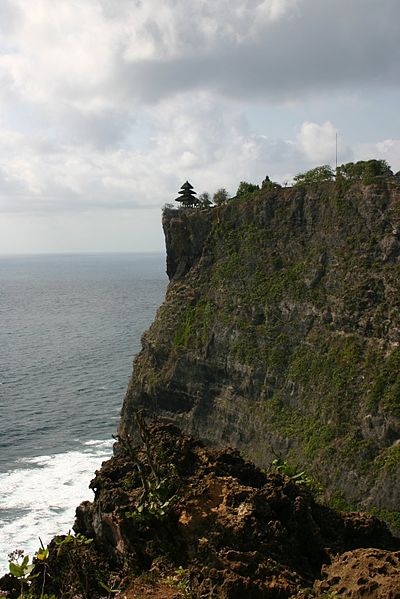 Pura Tanah Lot west of Canggu and south of Tabanan
Pura Tanah Lot west of Canggu and south of Tabanan
- Pura Luhur Uluwatu at the southwestern extremity of the Bukit Peninsula
- Pura Mas Suka at the southern tip of the Bukit Peninsula
- Pura Sakenan at Pulau Serengan, an island between Benoa and Sanur
- Pura Pulaki at Pulaki, northeast of Gilimanuk
Pura Luhur Uluwatu is the only Balinese sea temple that is also one of the nine Balinese directional temples.
Sources, Images: http://en.wikipedia.org/wiki/Bali, http://wikitravel.org/en/Bali,
http://en.wikipedia.org/wiki/Pura_(Balinese_temple),
http://en.wikipedia.org/wiki/Balinese_Sea_Temples

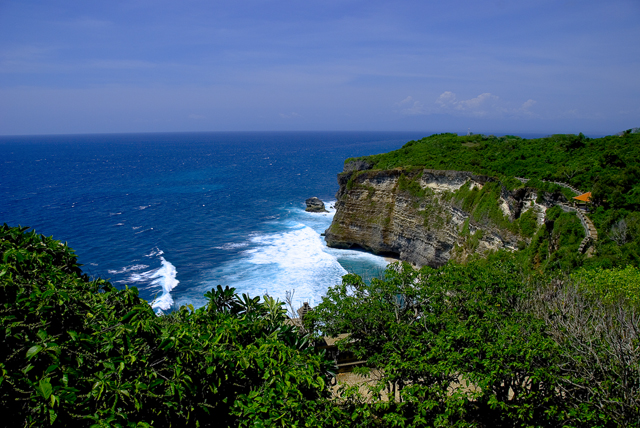
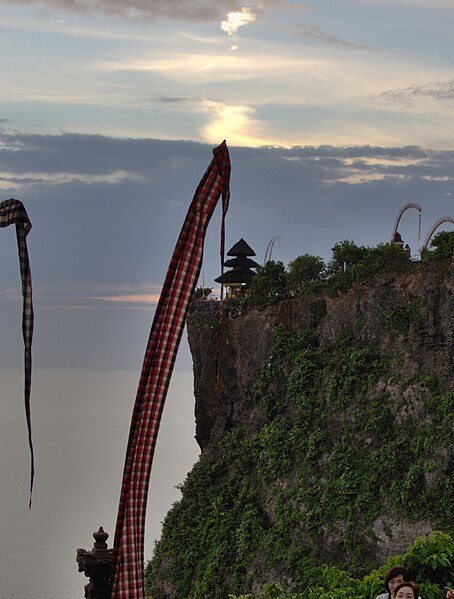




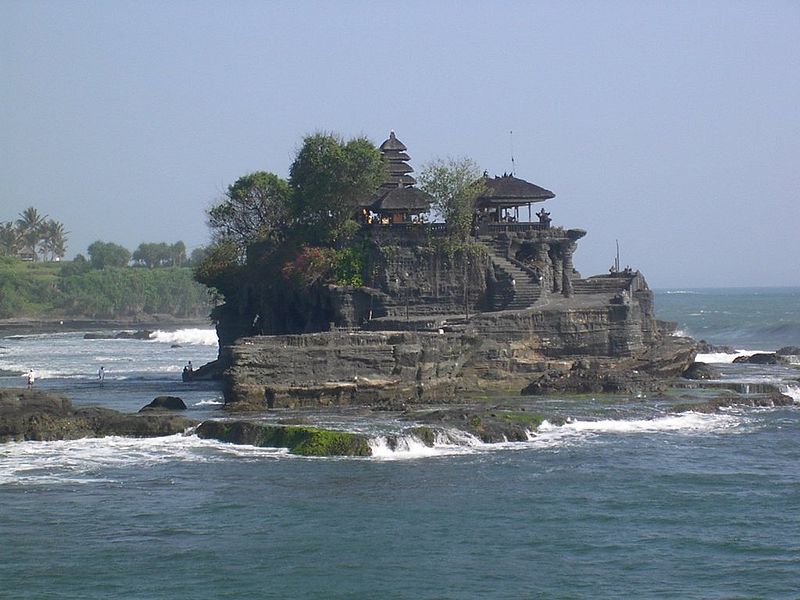




.jpg/800px-Mother_Temple_of_Besakih_(1).jpg)

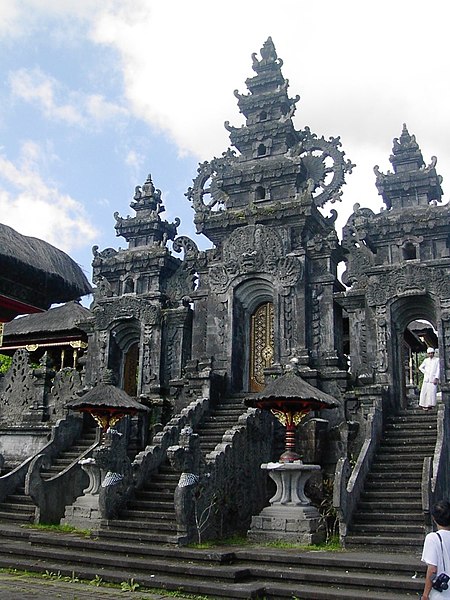



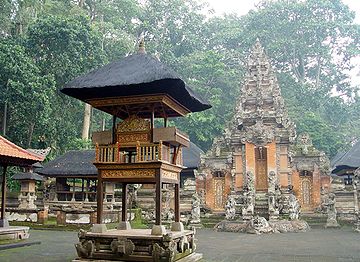

.jpg)







